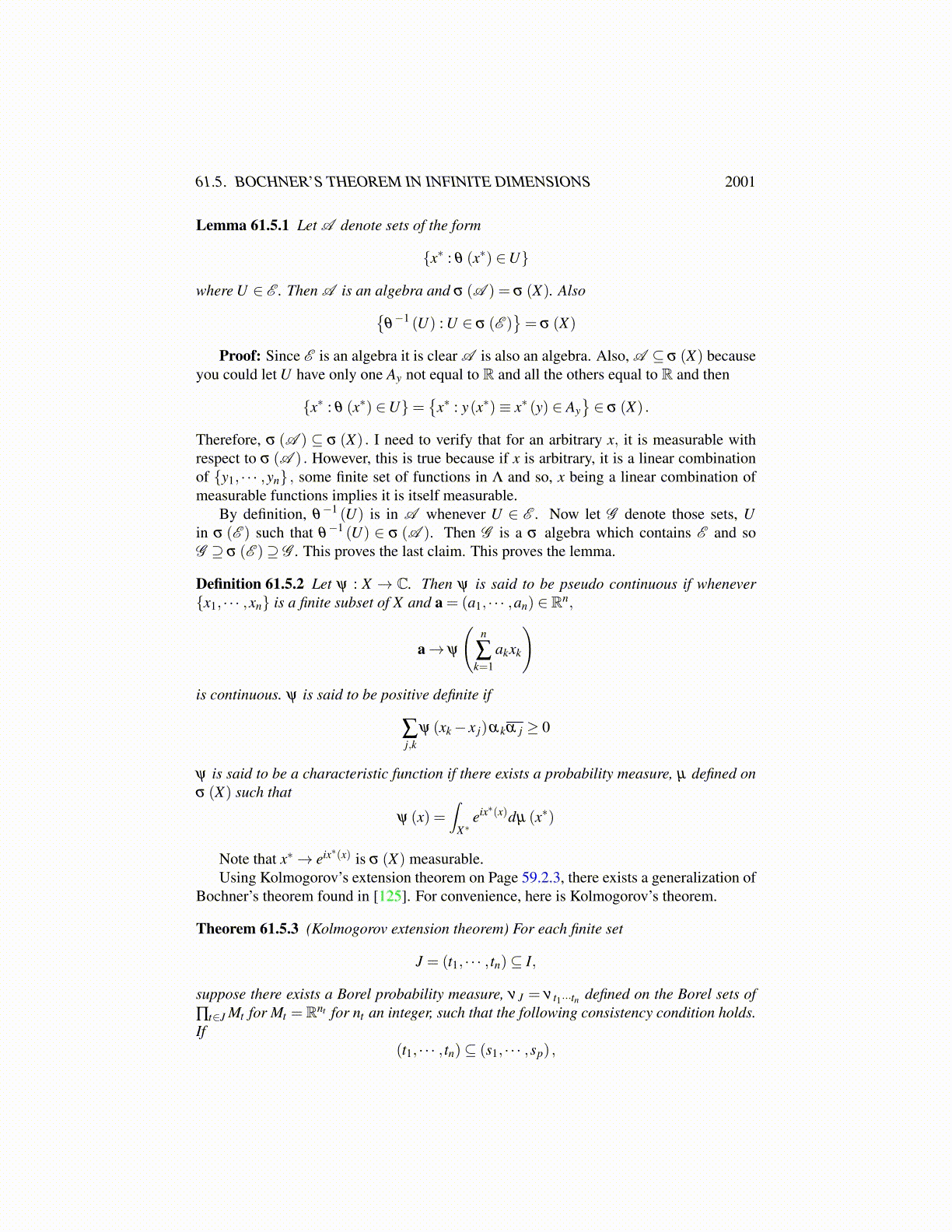
61.4. A MAJOR EXISTENCE AND CONVERGENCE THEOREM 2001
Since ε > 0 is arbitrary, this shows m((Xν)−1 (∂Ai1,··· ,im)
)= 0.
If ω ∈ Iνi1,··· ,im , then from the construction, Zν
p (ω) ∈ int(Ai1,··· ,im) for all p ≥ k. There-fore, taking a limit, as p→ ∞,
Xν (ω) ∈ int(Ai1,··· ,im)∪∂Ai1,··· ,im
and soIνi1,··· ,im ⊆ (Xν)
−1(int(Ai1,··· ,im)∪∂Ai1,··· ,im)
but also, if Xν (ω) ∈ int(Ai1,··· ,im) , then Zνp (ω) ∈ int(Ai1,··· ,im) for all p large enough and
so
(Xν)−1
(int(Ai1,··· ,im))
⊆ Iνi1,··· ,im ⊆ (Xν)
−1(int(Ai1,··· ,im)∪∂Ai1,··· ,im)
Therefore,
m((Xν)
−1(int(Ai1,··· ,im))
)≤ m
(Iνi1,··· ,im
)≤ m
((Xν)
−1(int(Ai1,··· ,im))
)+m
((Xν)
−1(∂Ai1,··· ,im)
)= m
((Xν)
−1(int(Ai1,··· ,im))
)which shows
m((Xν)
−1(int(Ai1,··· ,im))
)= m
(Iνi1,··· ,im
)= ν (Ai1,··· ,im) . (61.4.11)
Also
m((Xν)
−1(int(Ai1,··· ,im))
)≤ m
((Xν)
−1(Ai1,··· ,im)
)≤ m
((Xν)
−1(int(Ai1,··· ,im)∪∂Ai1,··· ,im)
)= m
((Xν)
−1(int(Ai1,··· ,im))
)Hence from 61.4.11,
ν (Ai1,··· ,im) = m((Xν)
−1(int(Ai1,··· ,im))
)= m
((Xν)
−1(Ai1,··· ,im)
)(61.4.12)
Now let U be an open set in E. Then letting
Hk ={
x ∈U : dist(x,UC)≥ rk
}